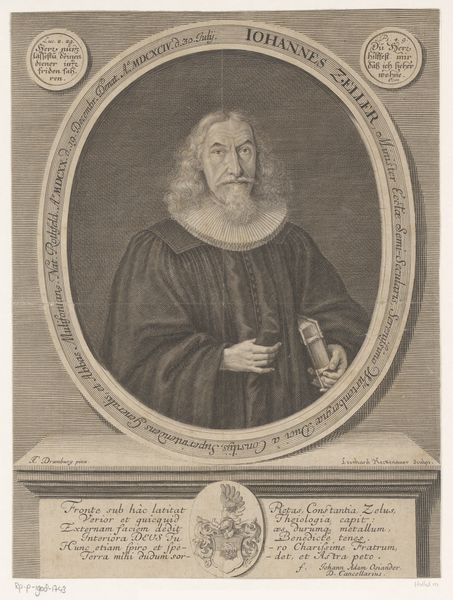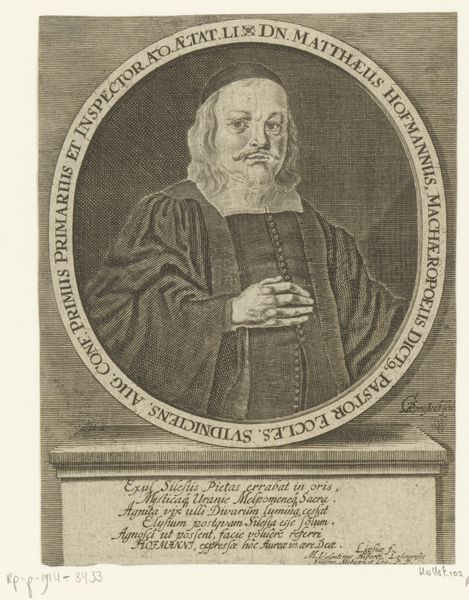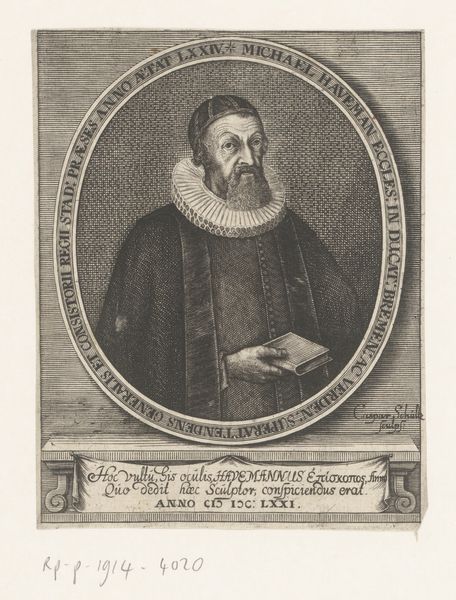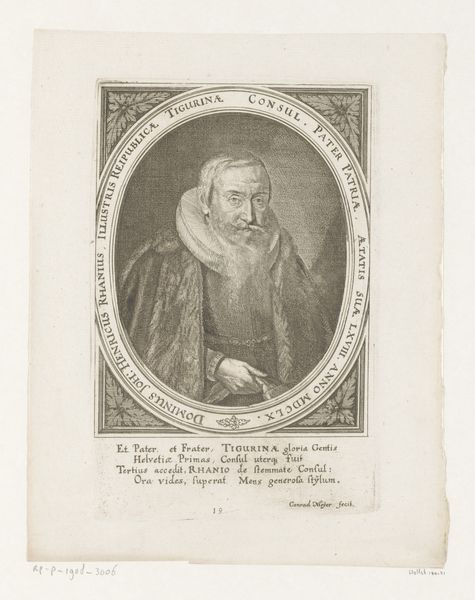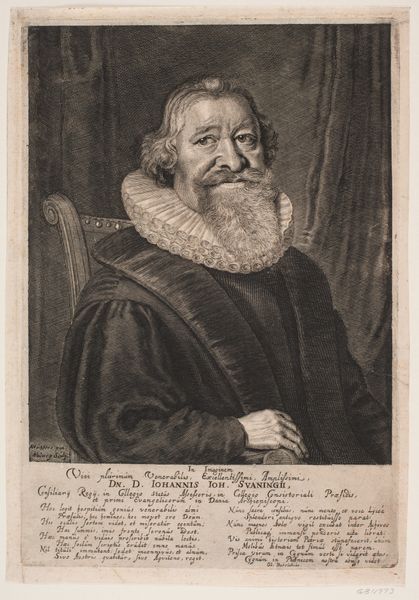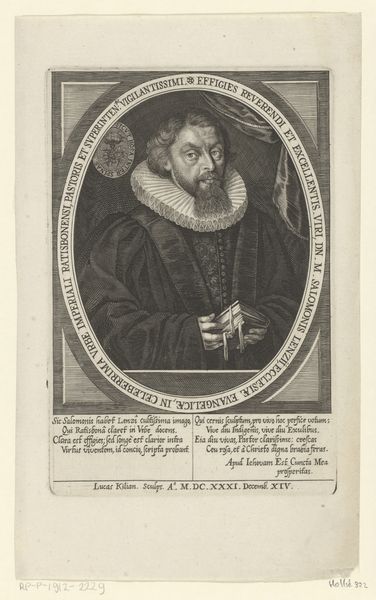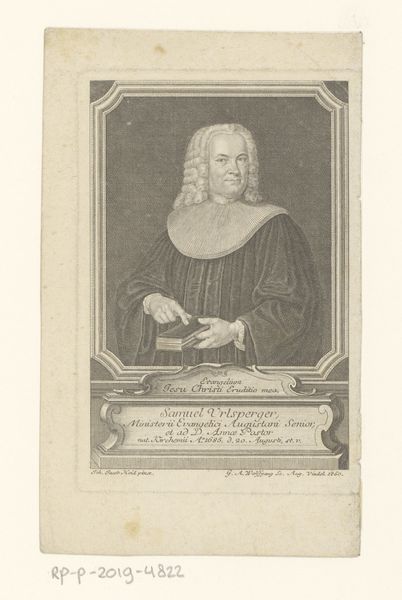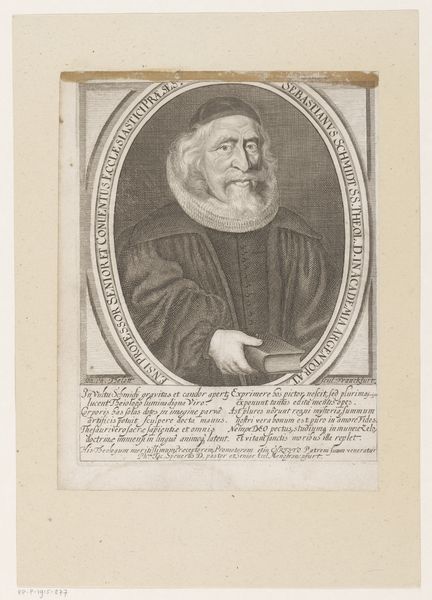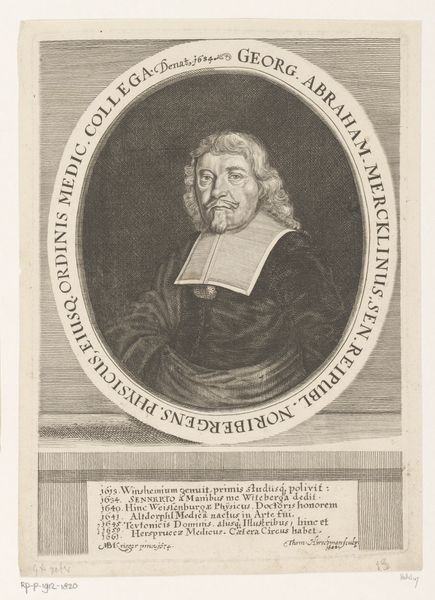
print, paper, engraving
#
portrait
#
aged paper
#
baroque
# print
#
old engraving style
#
paper
#
portrait reference
#
engraving
Dimensions: height 293 mm, width 210 mm
Copyright: Rijks Museum: Open Domain
Curator: Here we have "Portret van Michael Emmerling," dating sometime between 1665 and 1721. It's a print, specifically an engraving on paper. Editor: It has an antiquated aesthetic, a solemn depiction framed within dense inscriptions. I notice how the aging of the paper seems integral to its meaning, reinforcing the sitter's gravitas and history. Curator: Indeed, prints such as these served multiple purposes back then. As a portrait, it offers a likeness of Michael Emmerling. But its existence as a readily reproducible object means we must also consider the socio-political context for circulating his image. Who commissioned it, and for what audience? Was this a private commission, or was it intended for wider public consumption? Editor: Good point. Focusing on the process, the engraving highlights the labor invested in creating these images. Each line, each inscription, would have been painstakingly carved into a metal plate. The material tells a story of artisanal skill and a certain degree of investment – how might this affect our understanding of who could afford or commission such items? Curator: Exactly! Think of the guilds, the print shops, the distribution networks... the work involved extends beyond the named artist. Looking at the Baroque style, and thinking about institutional history, the use of elaborate frames and symbolic elements were popular, projecting power. How did visual communication through printed images assist social elites in solidifying their image or values during that era? Editor: It's like a very early form of branding. He is identifiable via symbols – a specific kind of clothing, hairstyle. Then the surrounding script adds layers of status, lineage, position, communicating to a literate viewership. Curator: Consider also the consumption aspect, in comparison with contemporary print media. Who did engage with it at the time and where did this image end up in, circulating within homes and institutions to affirm Michael Emmerling's prestige and place in the hierarchy. Editor: So it isn't just about individual representation. But its broader influence lies in visualizing societal values. Understanding how the material realities shape production and distribution makes it powerful. Curator: Precisely. Seeing "Portret van Michael Emmerling" in our time, it highlights our link to production practices from prior ages. Editor: And prompts thinking of art's part in framing ideas regarding figures of influence at various points in the history of humanity.
Comments
No comments
Be the first to comment and join the conversation on the ultimate creative platform.




